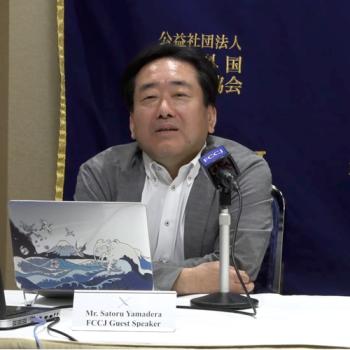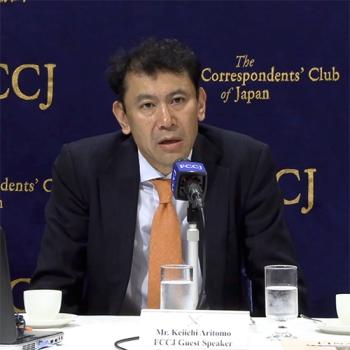Issue:
June 2025 | Deep Dive
While Trump plays cat-and-mouse with the markets, Asia turns to new sources of funding

When it comes to deciding who is boss, is it the market, or Donald Trump? That was the question posed at a recent Deep Dive event at the FCCJ titled The Trump Impact on the Global Financial System.
One panelist argued that the title should have been written the other way round – that the market is king, and the US president merely a player, albeit an important one.

That was the view of the veteran market analyst Jesper Koll, who suggested that “dependence on the depth and the breadth of U.S. capital markets is not going to go away, since it is those markets that are going to hold [Trump] accountable. They are the only thing he listens to”.
Koll was referring to the remarkable bounce in stock prices and in other financial markets after the crash on April 2, when Trump announced his tariff bombshell, only to declare a 90-day tariff truce a few days later when U.S. stocks and the dollar started to plummet. That reaction showed who is really in control, he said. “President Trump and his team are utterly beholden, [and] Americas Capital Markets continue to be boss.”
Yet the premise that Trump tariffs and tantrums will impact not just the level but the structure of financial markets from hereon in still holds true, as other panelists made clear.
Much has been going on behind the scenes in making Asia more independent of U.S. capital markets and U.S. dollar funding, according to Satoru Yamadera, an advisor in the Economic Research and Development Impact Department at the Asian Development Bank.

This, as the former Bank of Japan official noted, is important because Asia learned a bitter lesson in 1997, when its vulnerability to a dollar-dependency crisis became painfully clear in the shape of economic recession and financial failure.
Since then, moves have been afoot, largely out of the limelight, to change Asia’s dependence on short-term dollar funding to long-term local currency funding, through the development of local currency bond markets.
Yamadera did not say as much, but the credibility of the U.S. Treasury bond market – the world’s biggest – has been called into question by some of Trump’s policy actions. A crisis there could be disastrous for the world.
Yamadera said there had been “exponential growth” in the size of what is known as ASEAN+2 local currency markets since the inception of the Asian Bond Markets Initiative of ABMI ( to which the ADB acts as a secretariat) in 2003.
So much so that the outstanding value of ASEAN+2 bonds at somewhat above $25 trillion exceeds the Euro-area’s euro-denominated bonds, and is comparable to the U.S. Treasury bond market. The bulk are government bonds and the rest corporate bonds.
China now has the second-largest local currency bond market in the world, while countries such as Thailand and Malaysia have markets comparable in size to those of smaller European states.
As Yamadera noted: “This is quite important, because if something like a global financial crisis happens, those countries can finance themselves by issuing local debt. They don’t need to tap the U.S. dollar offshore market. Instead, they can finance themselves and conduct their own policies.”
This is important, because in the past Asian and other countries in financial distress had to borrow dollars from multilateral institutions such as the IMF and World Bank, and subject themselves to economic policy “conditionality” imposed on borrowers”.
Uncertainty about the reliability of U.S. financial markets has added momentum to moves to accelerate alternative capital markets development in Europe and Asia.

The 27 members states of the European Union, for example, plan to create a single market for capital, the Capital Markets Union. The aim is to get money – investments and savings – flowing across the EU so that it can benefit consumers, investors and companies, regardless of where they are located.
At the same time, the ASEAN Economic Community (AEC) Blueprint envisions a region with interlinked capital markets that facilitate greater trade and investment flows. ASEAN members believe that a deeper and more liquid capital market helps channel funds to where they are needed.
Where does Japan fit into this? Eiichi Aritomo, chief executive of FinCity.Tokyo - a government and private sector organization established in 2016 to promote Tokyo’s development as a regional and global financial centre – noted that Japan was considered “the most stable economy” in Asia.
Unlike those in China and other Asian nations, Japan’s capital markets are open and free of controls, and their financial regulations are well established. While the yen has long been one of the region’s most volatile currencies, Arimoto said, this is because of its close relationship with the dollar, a relationship that might diminish over time in line with Asia’s dollar dependency.
Anthony Rowley is a columnist and contributor for the South China Morning Post.

